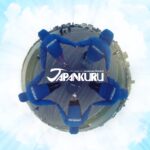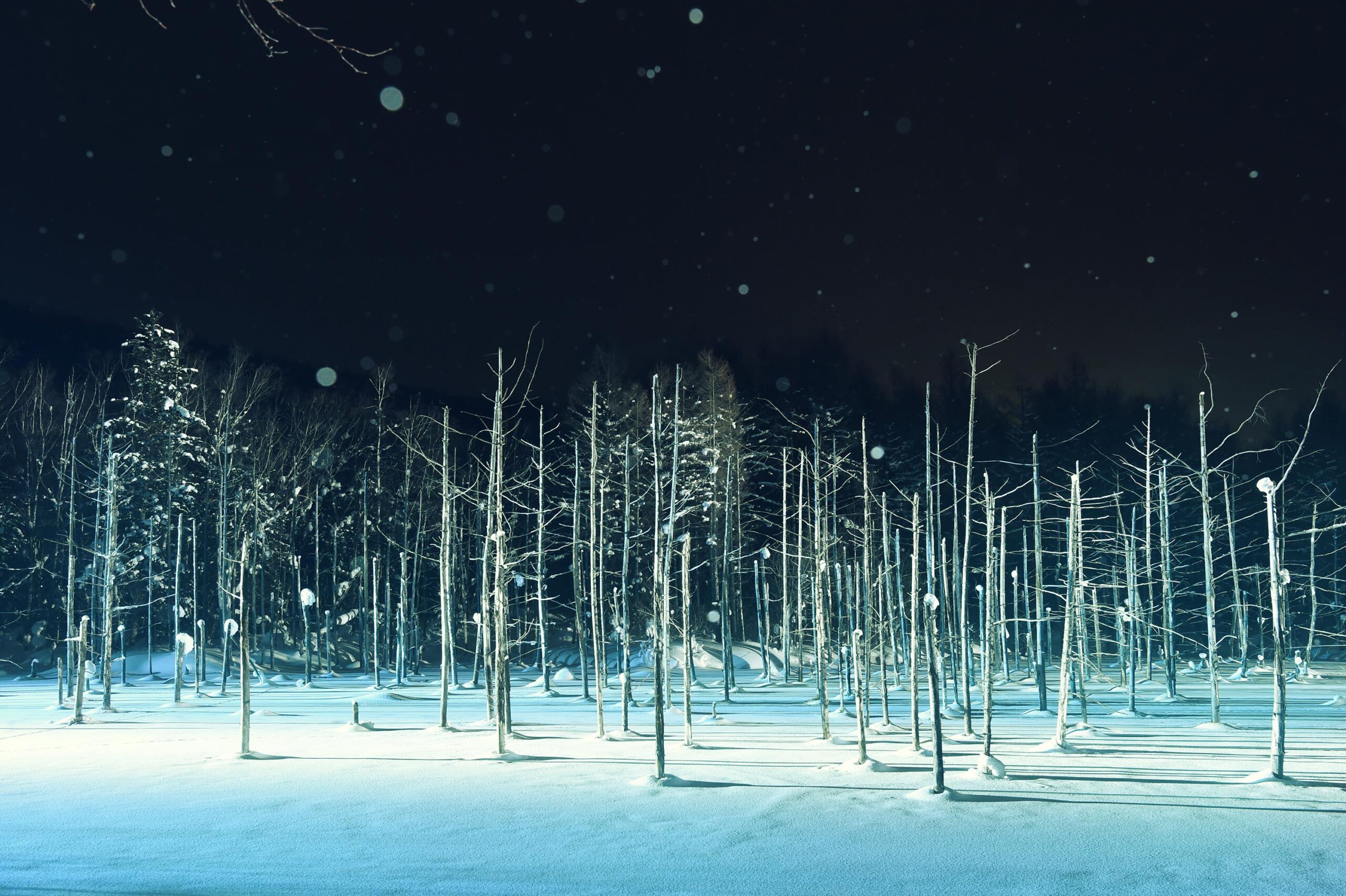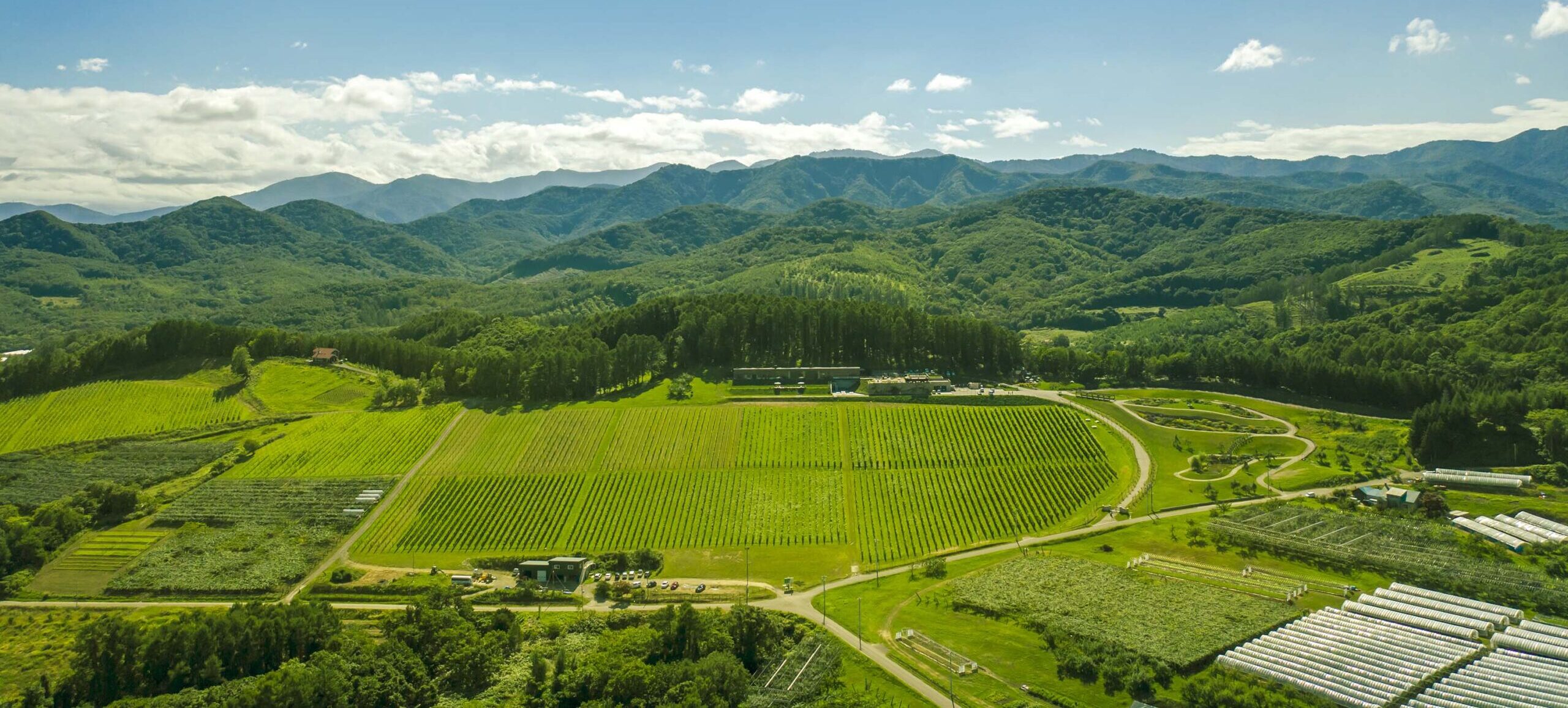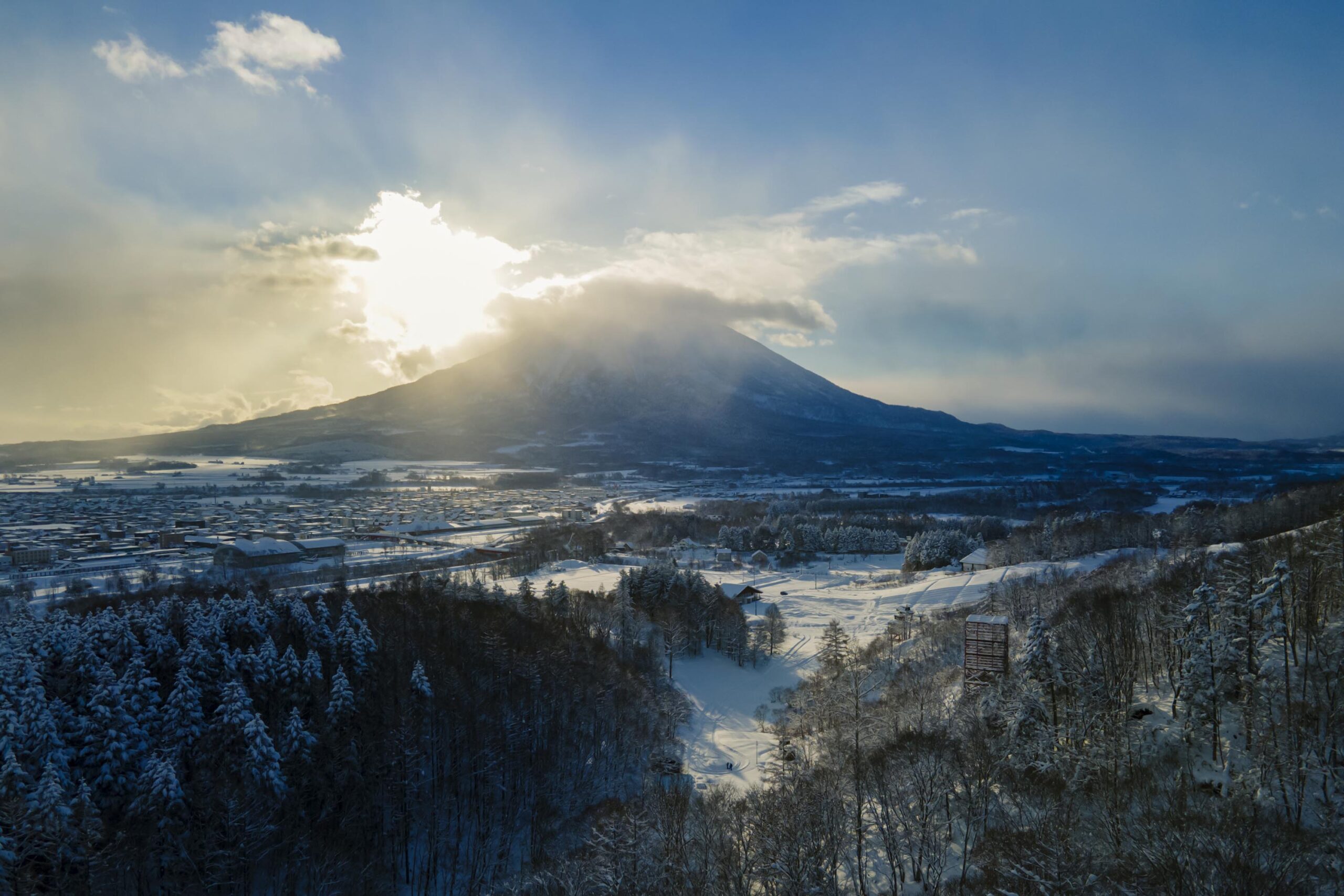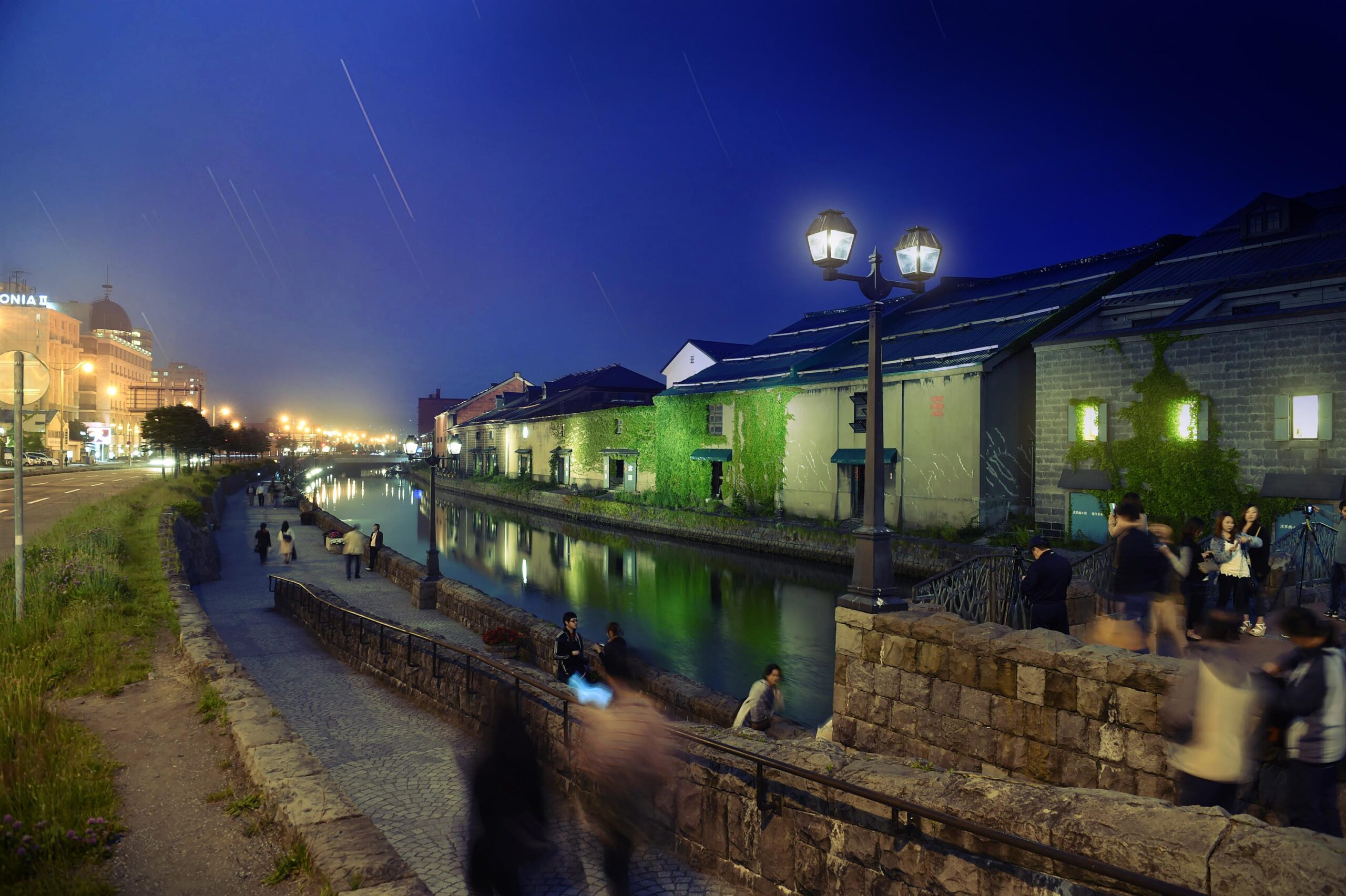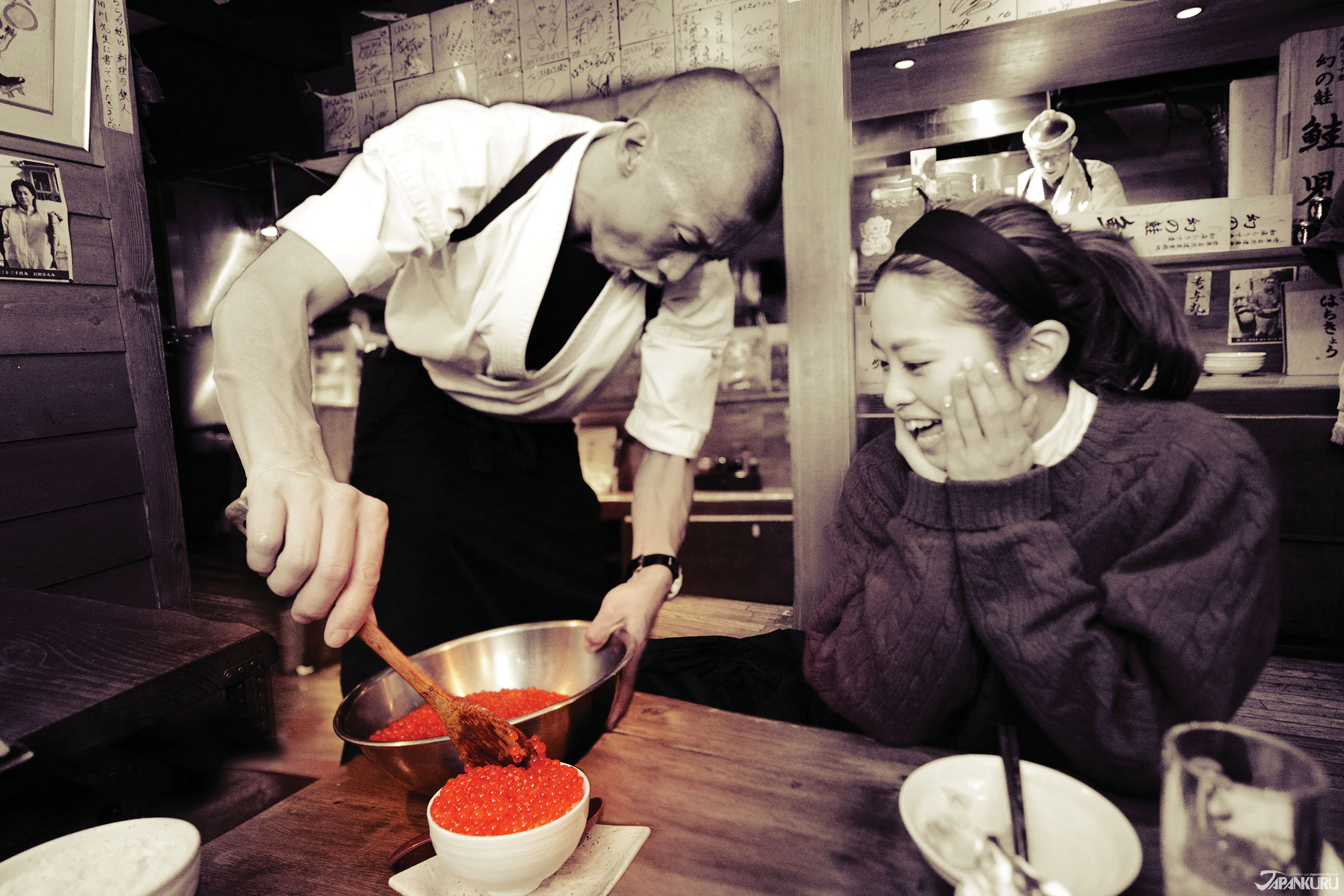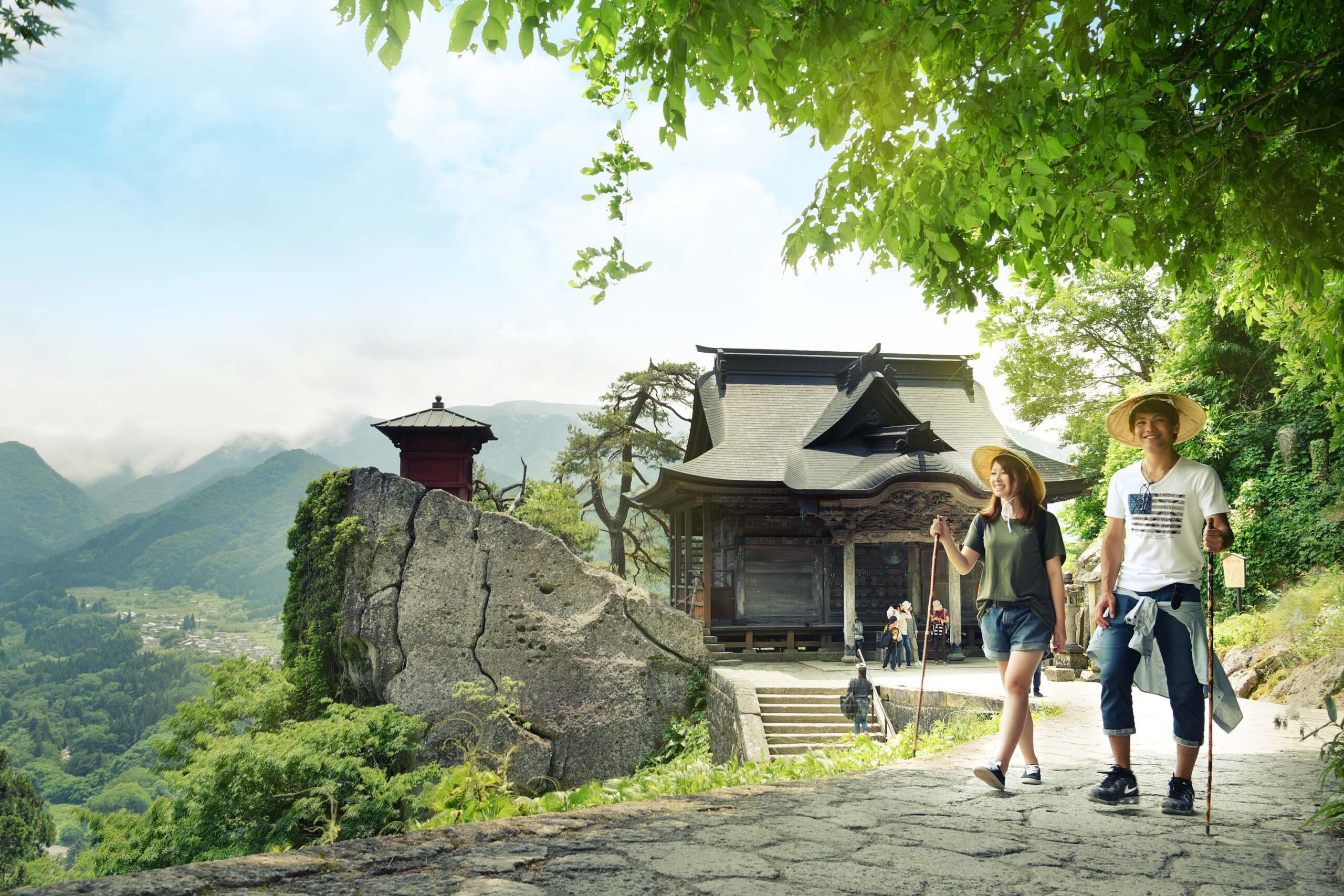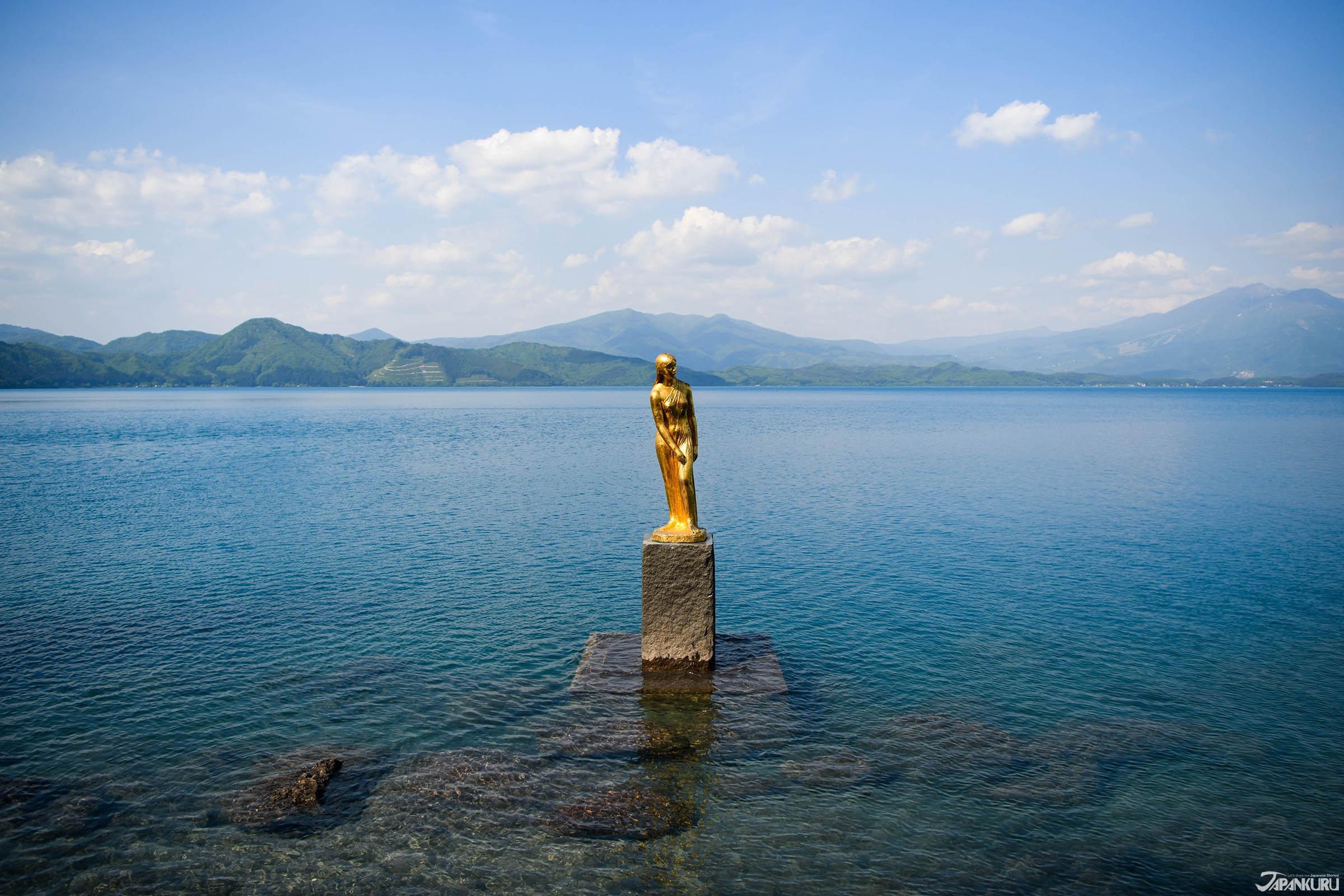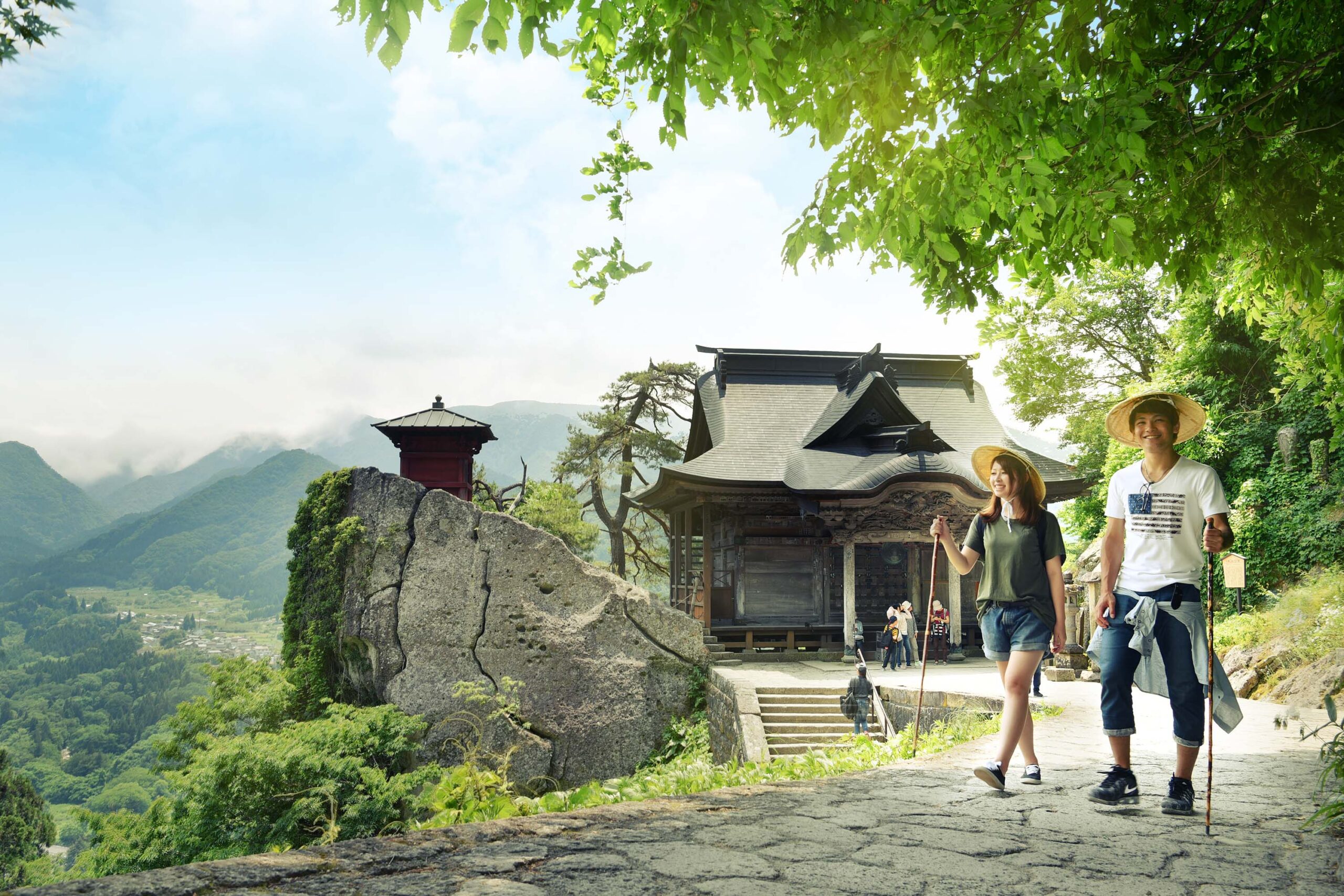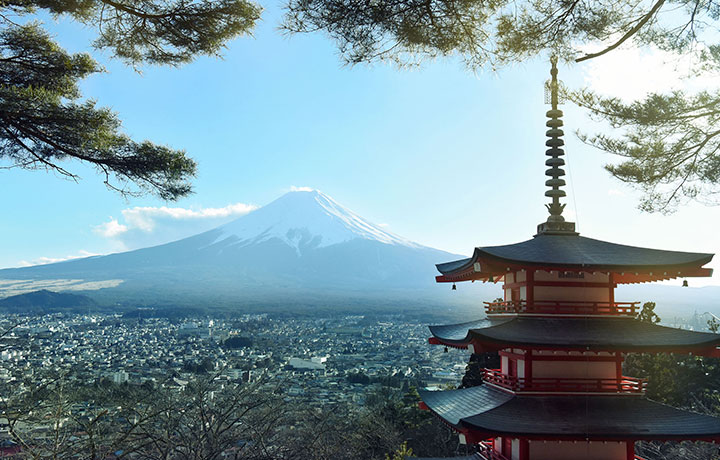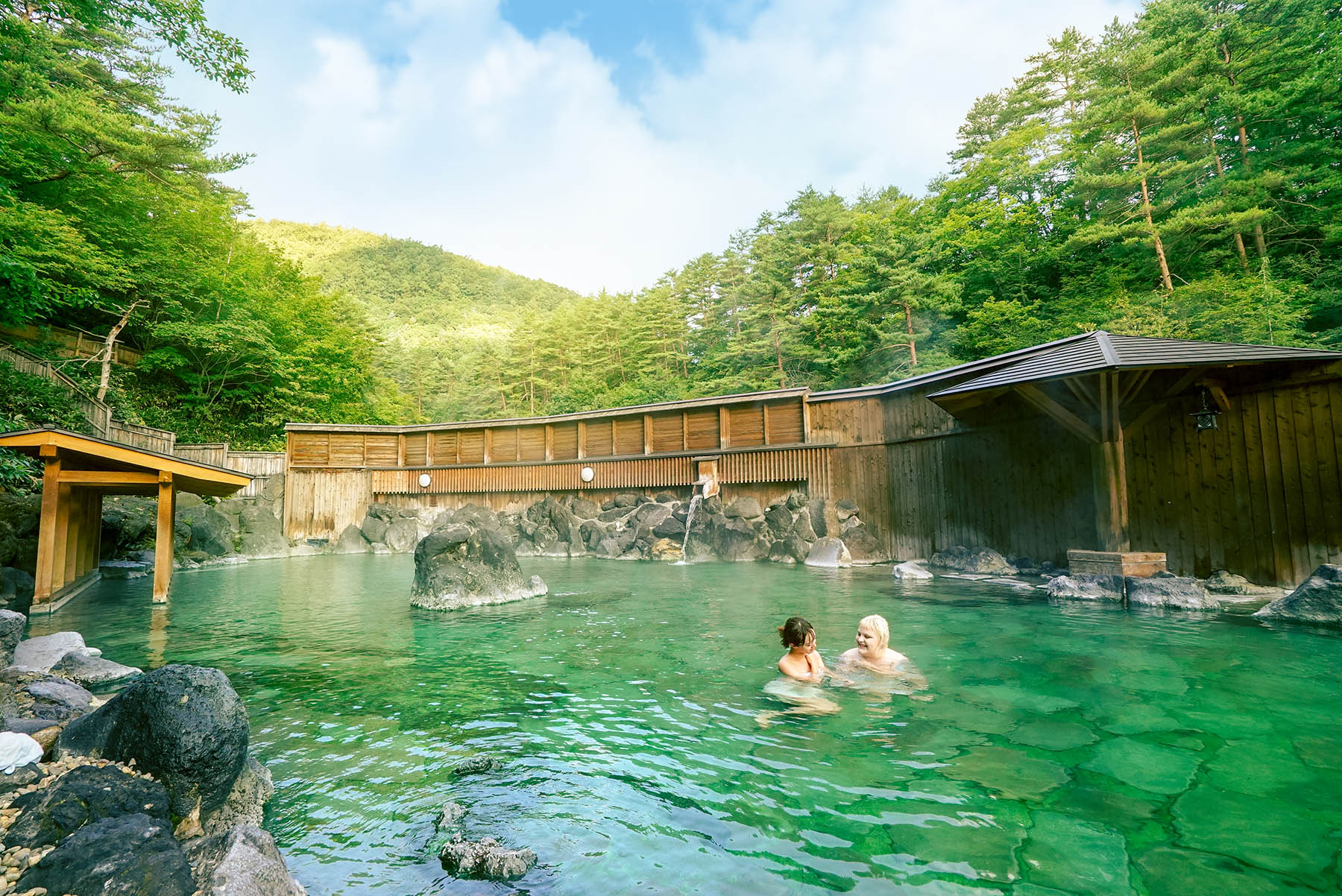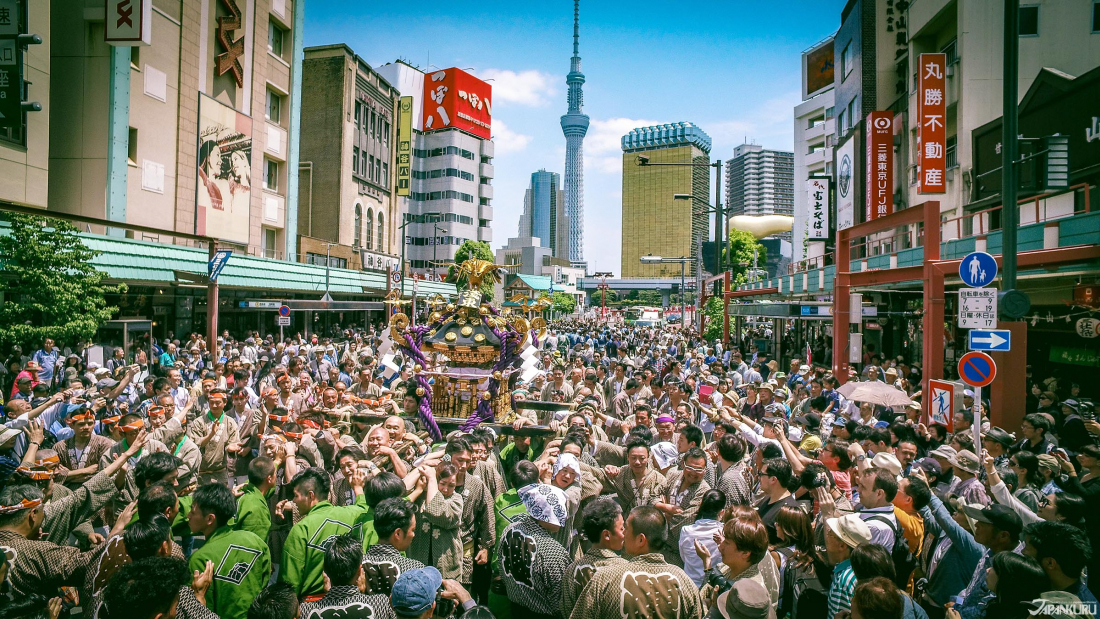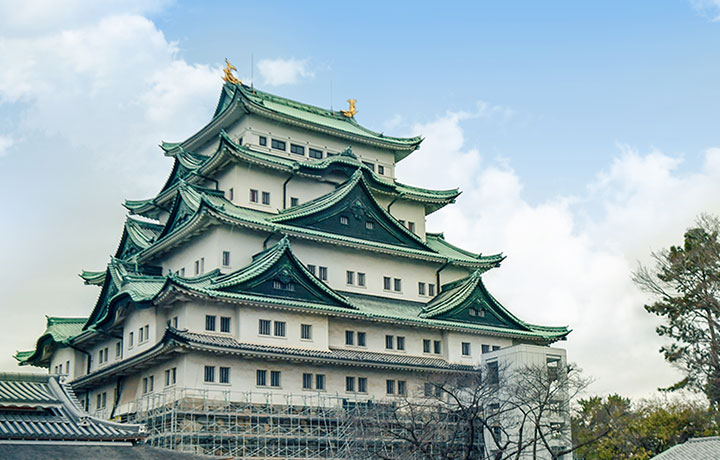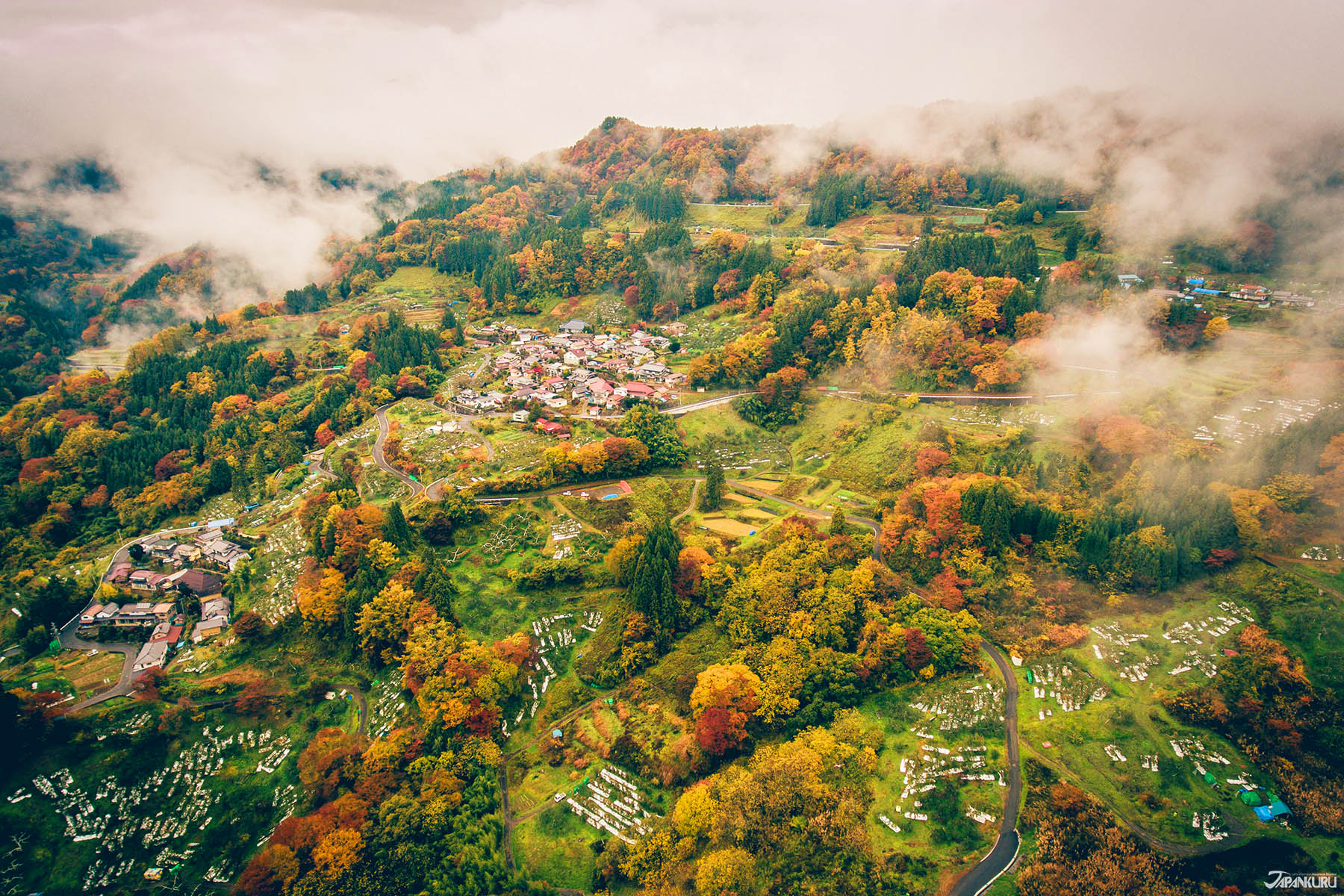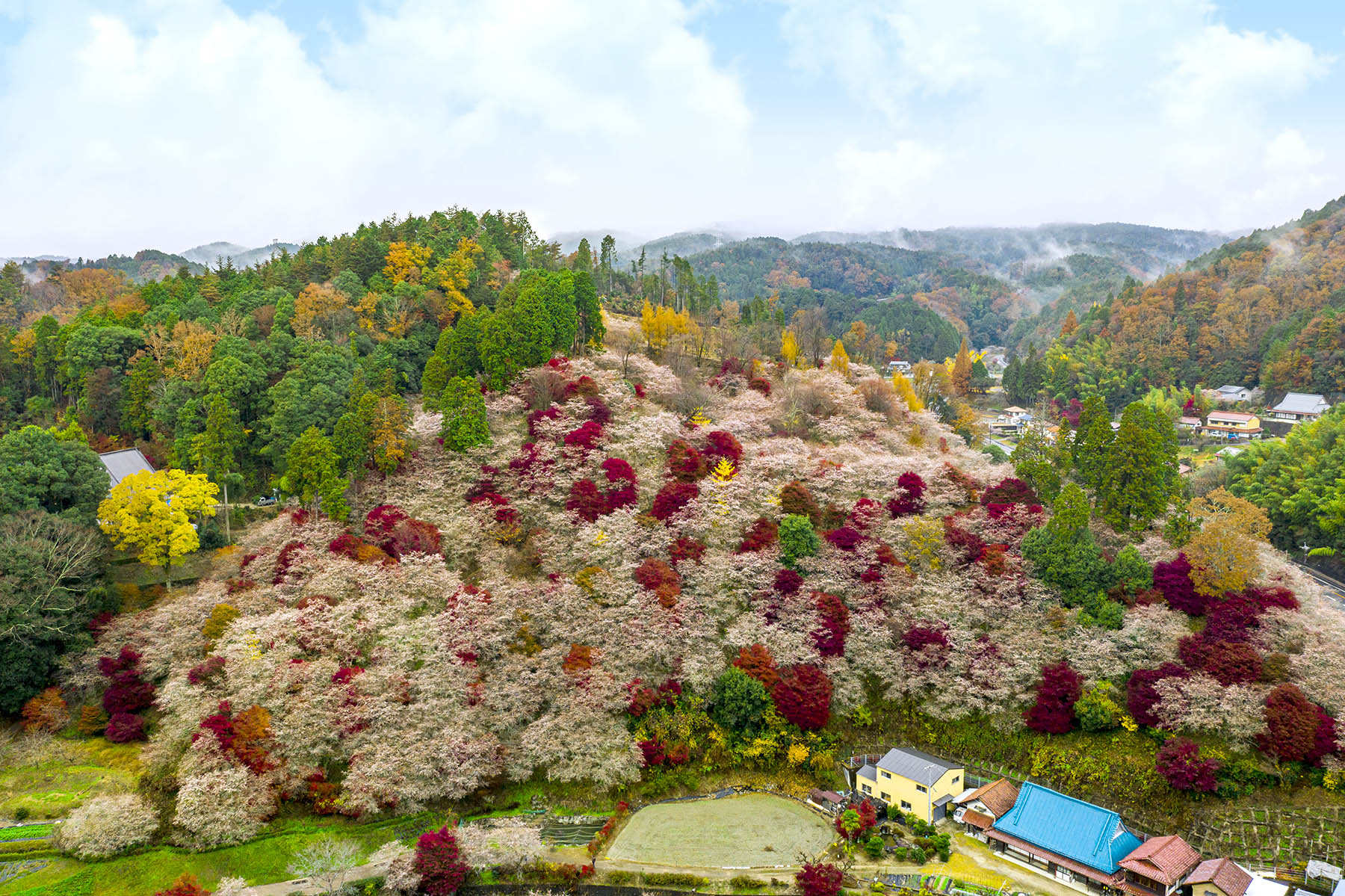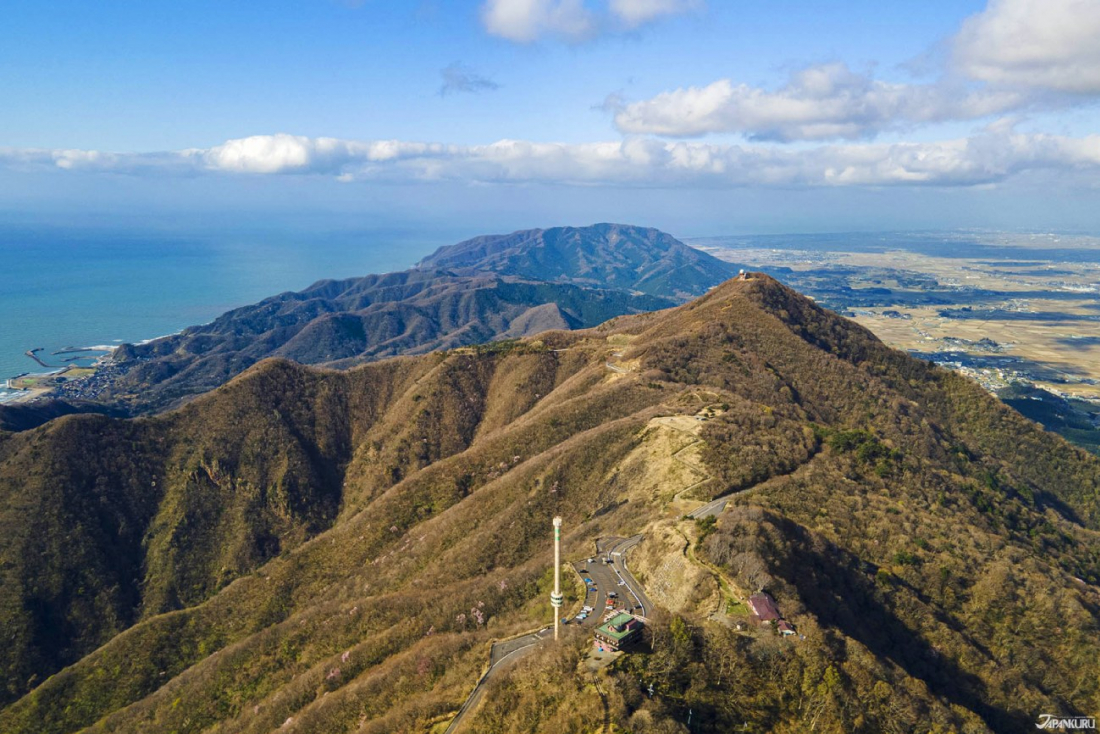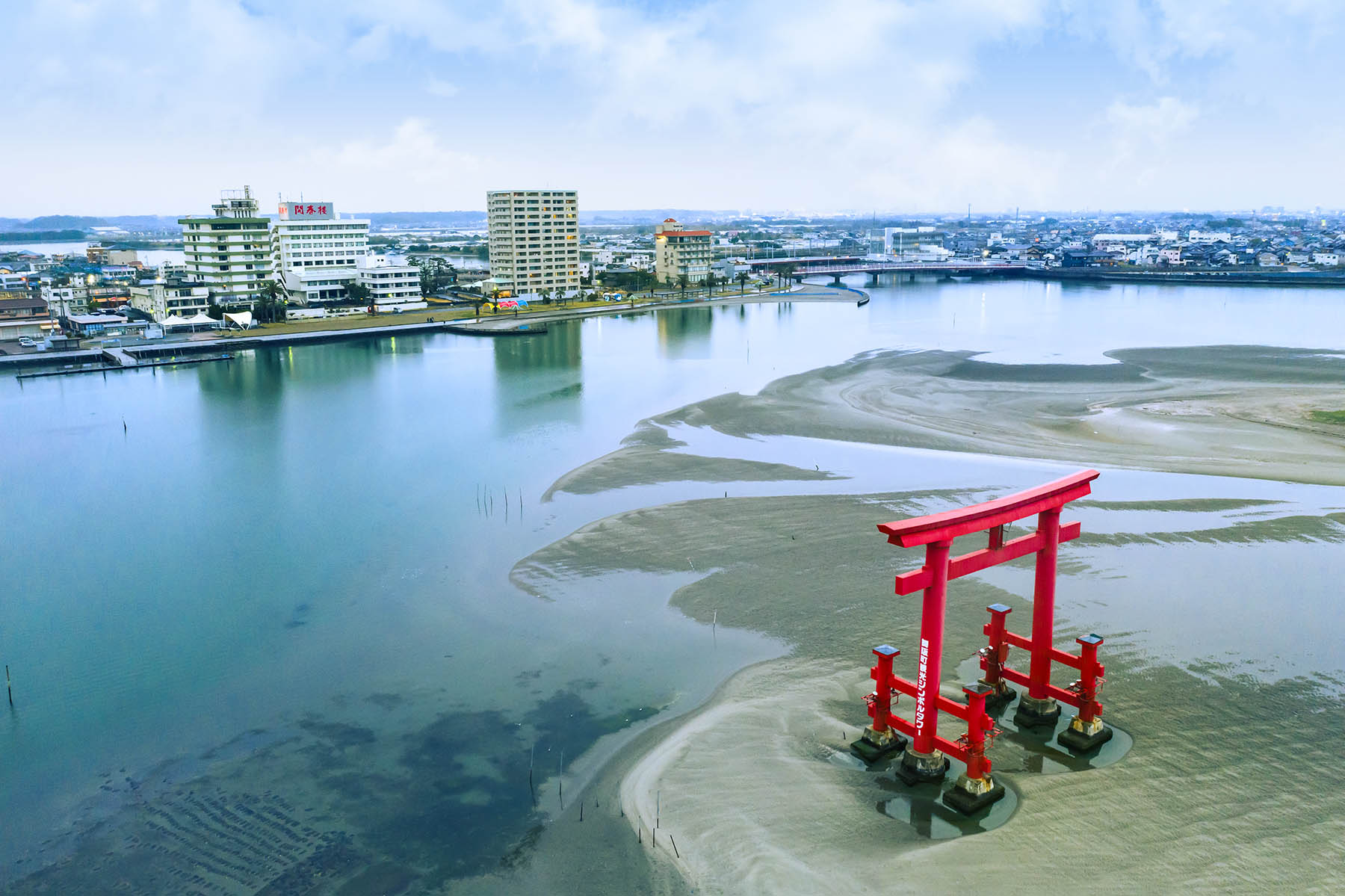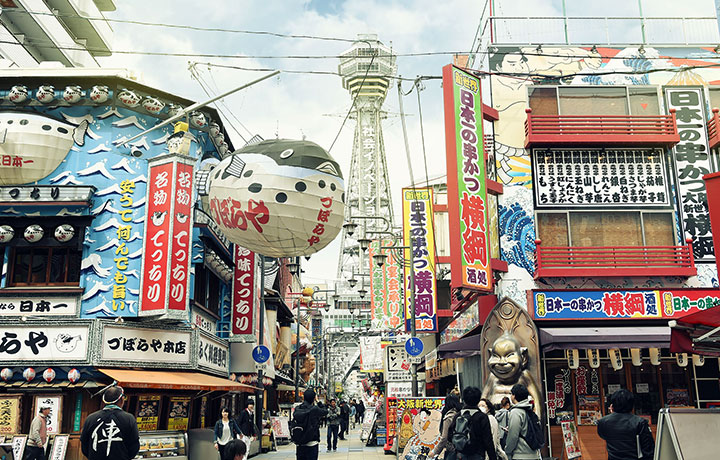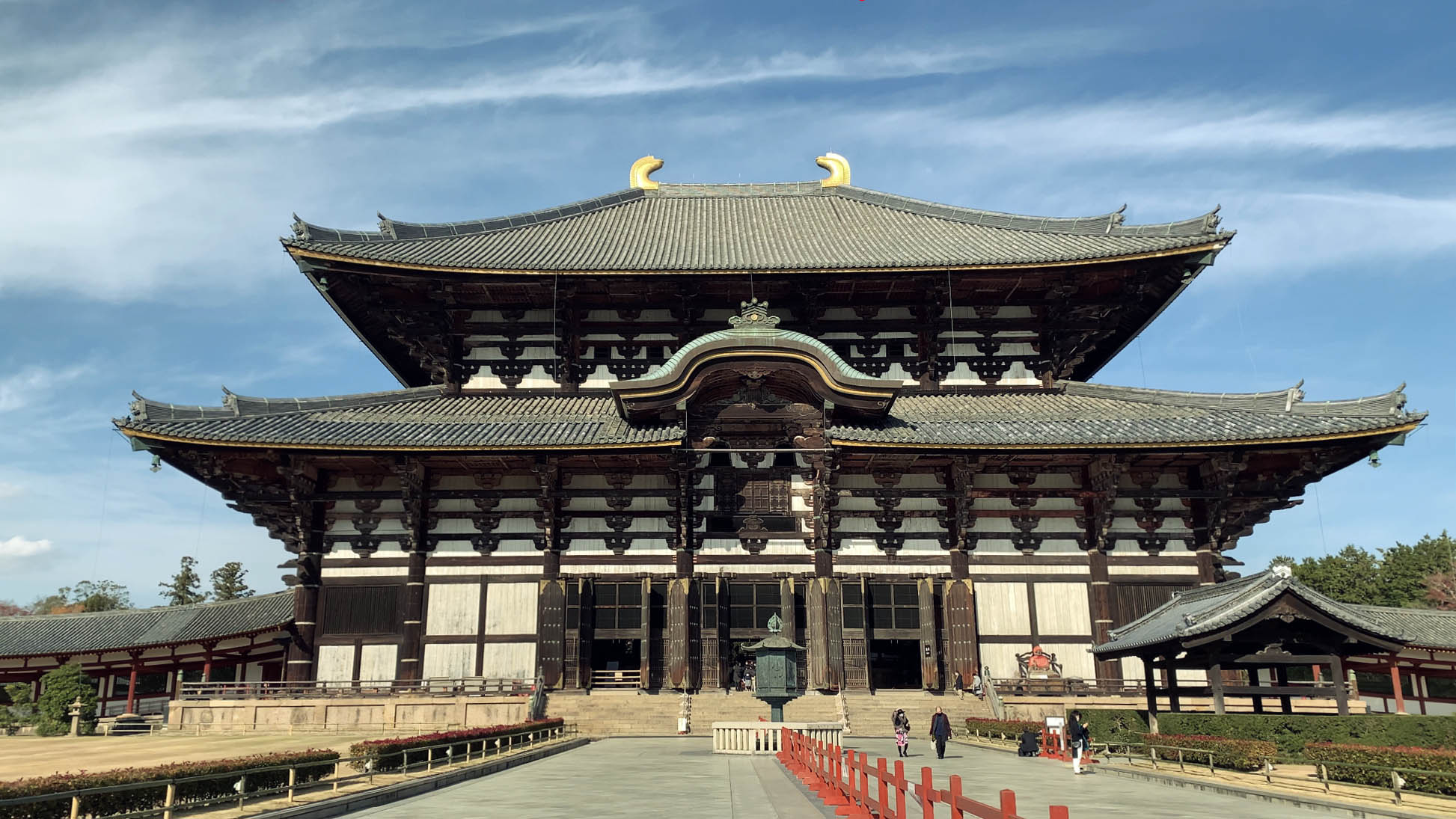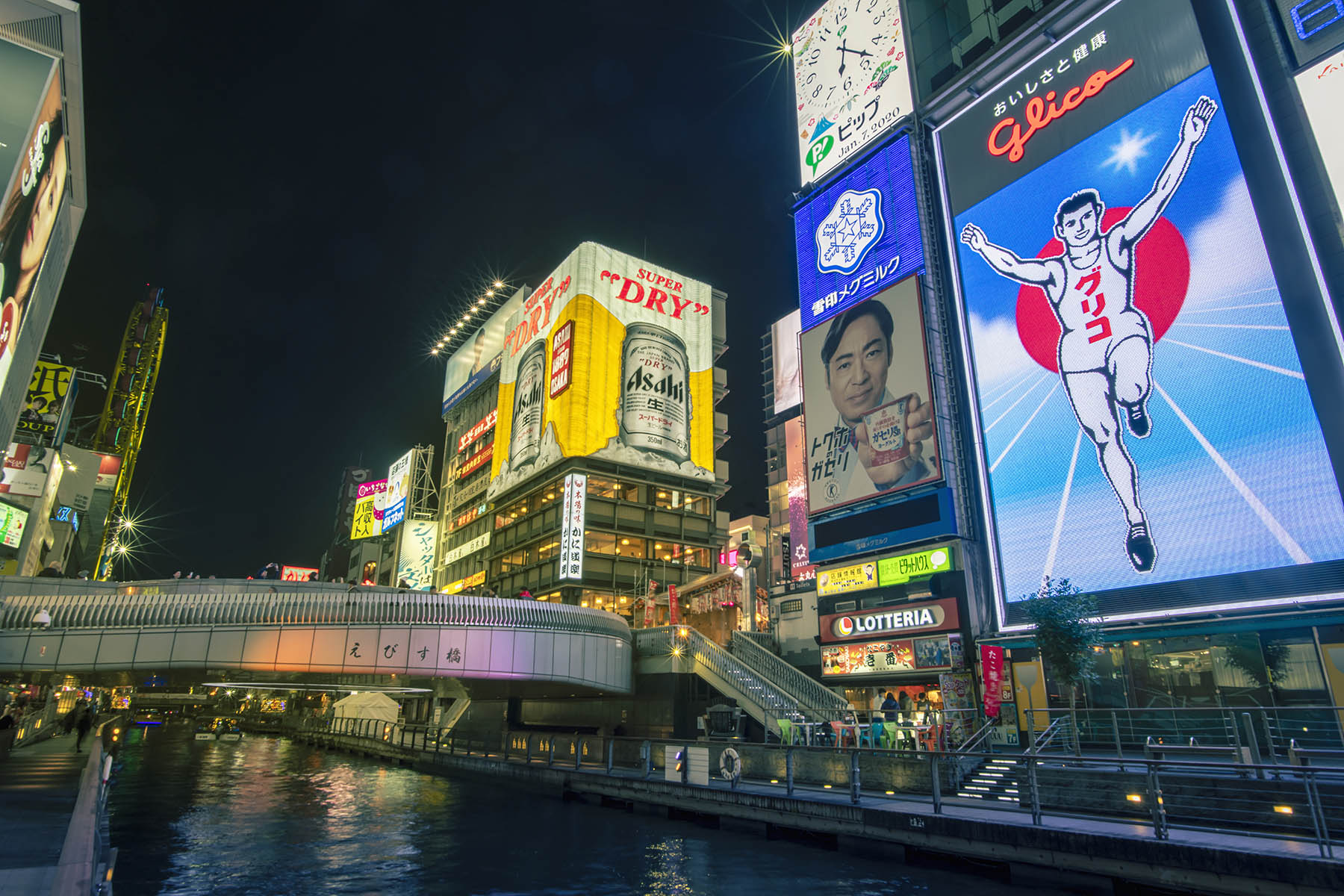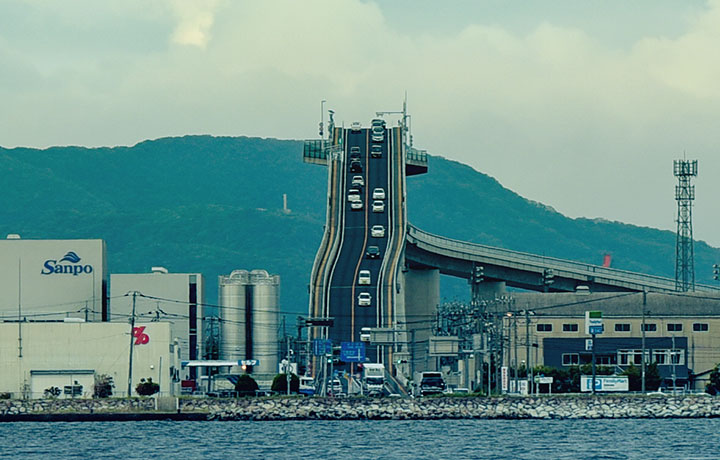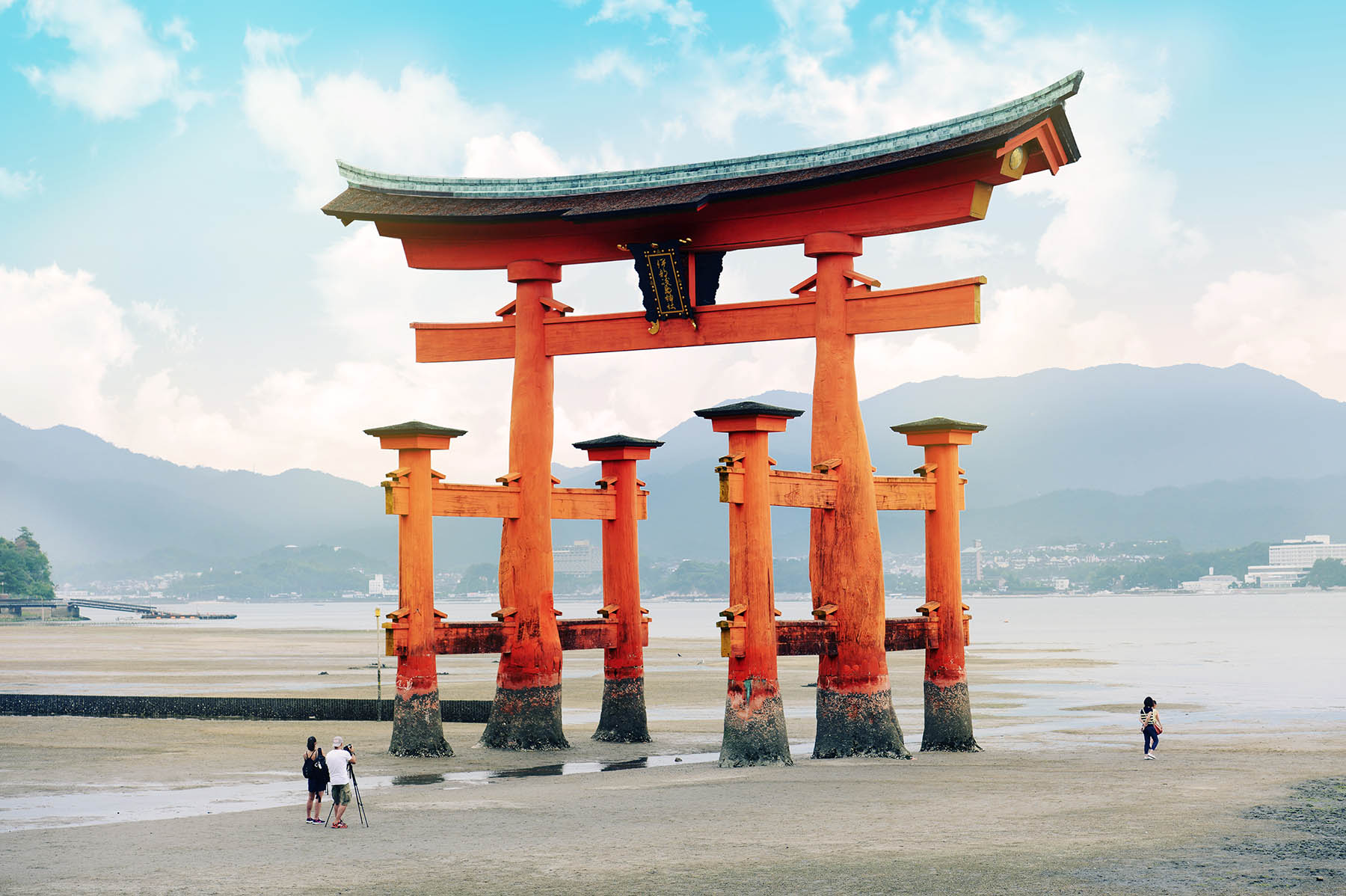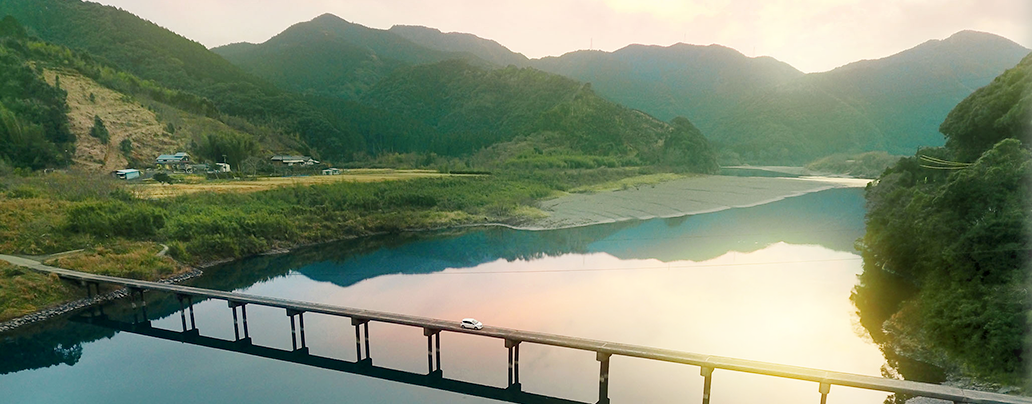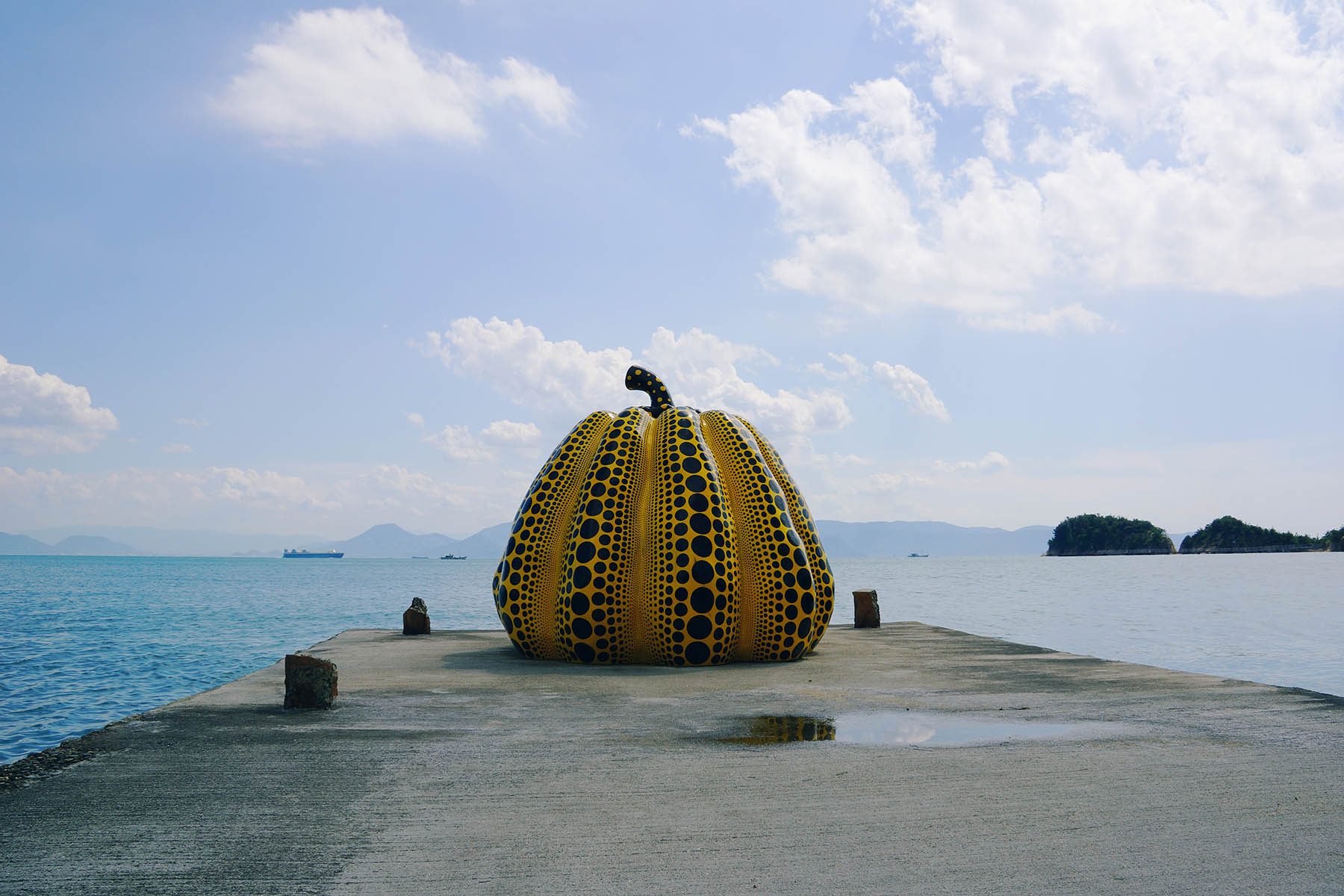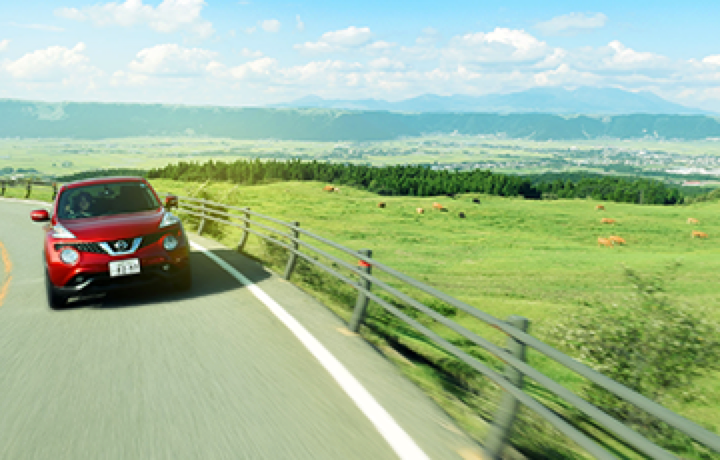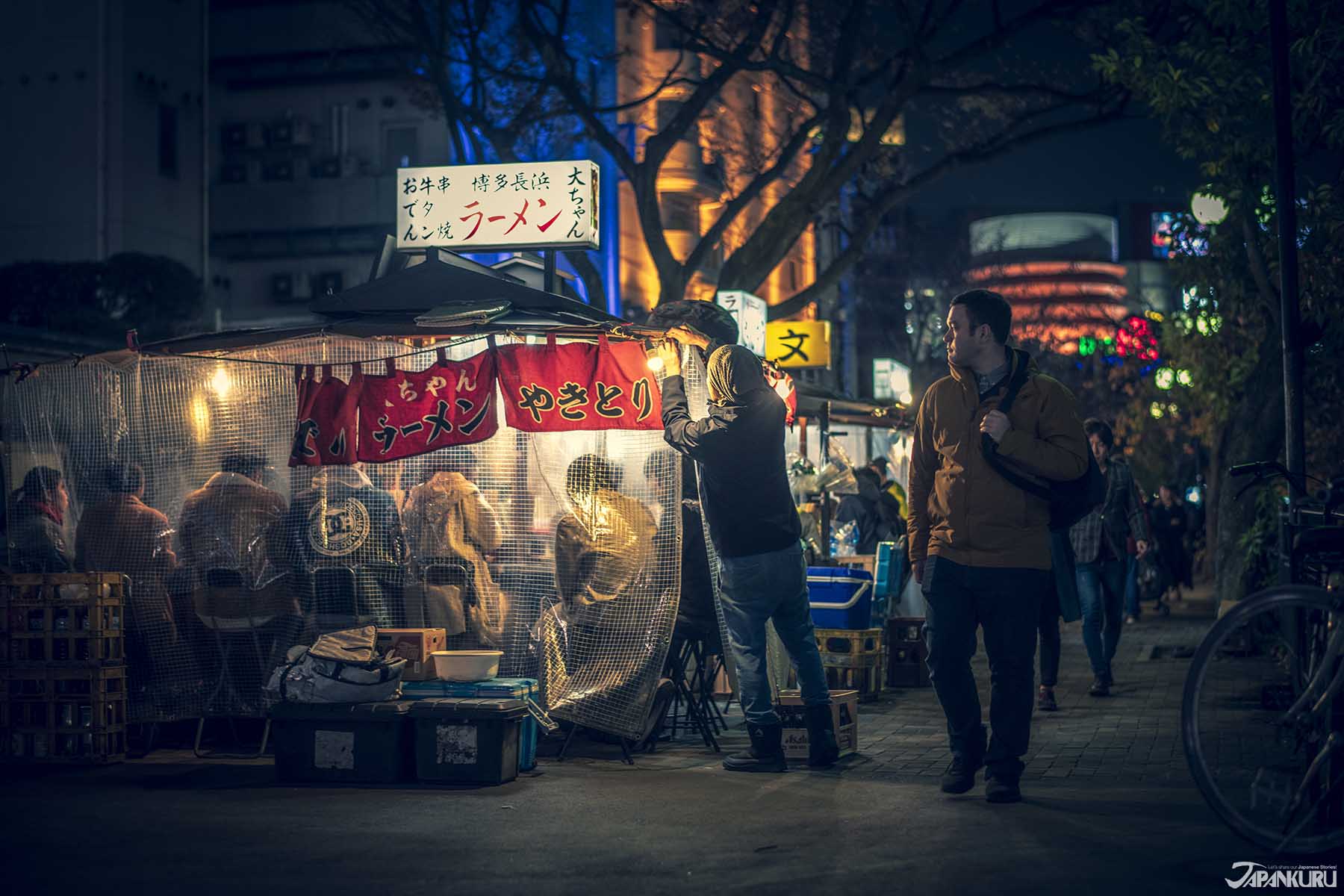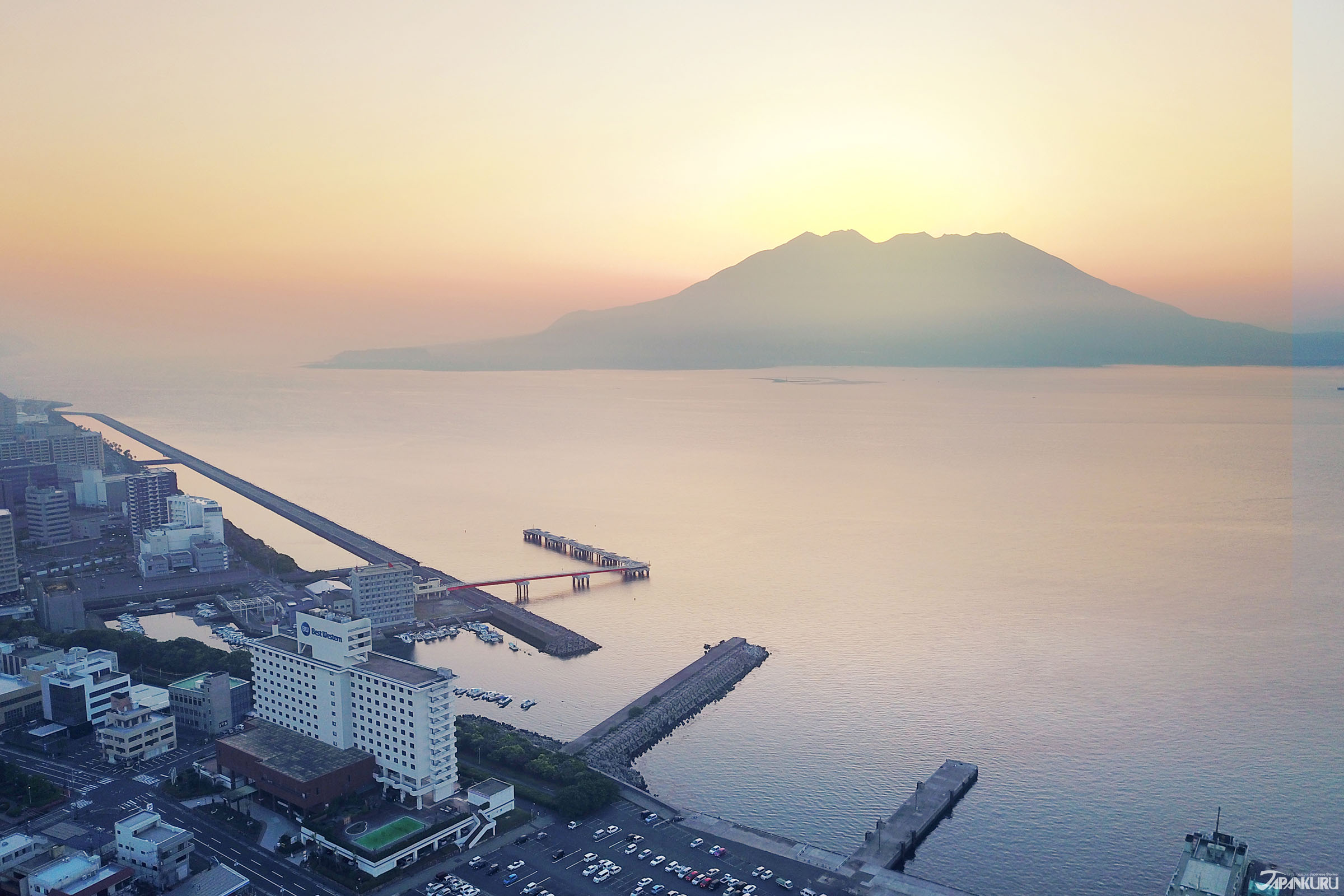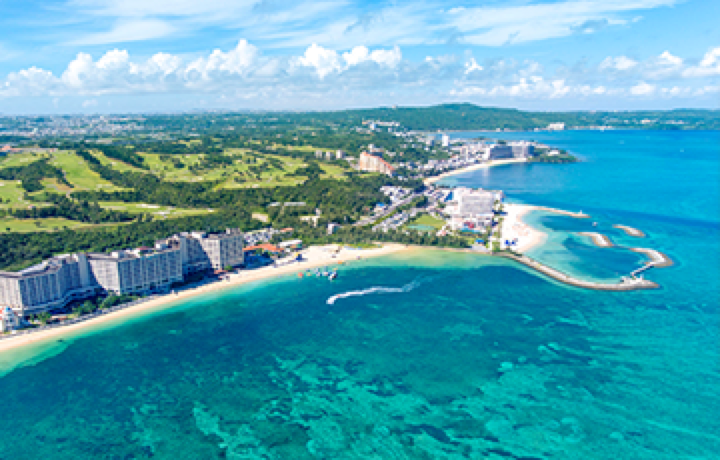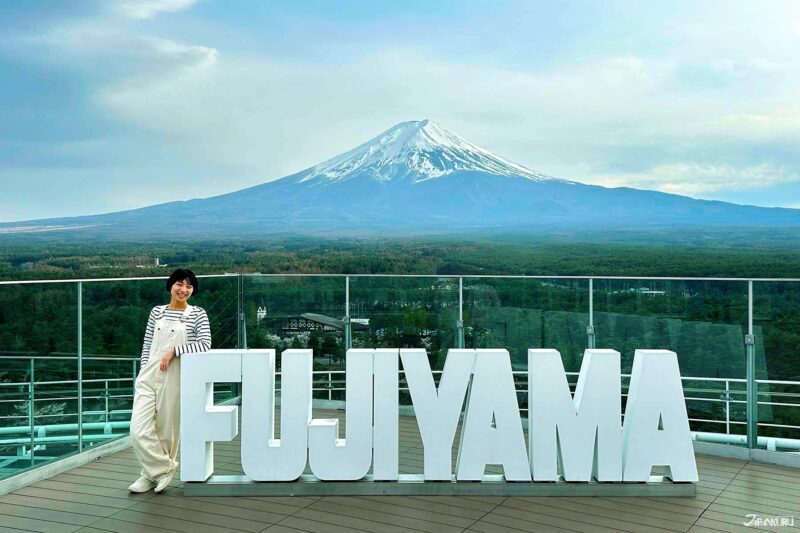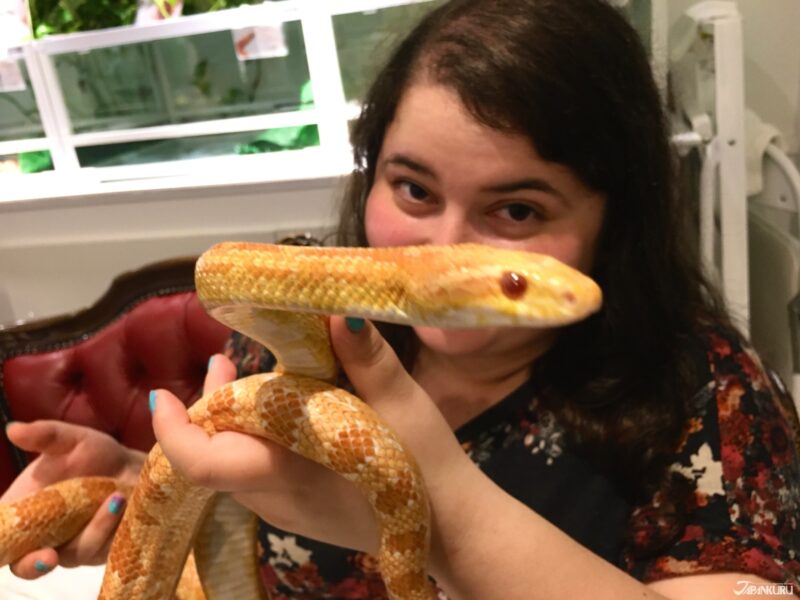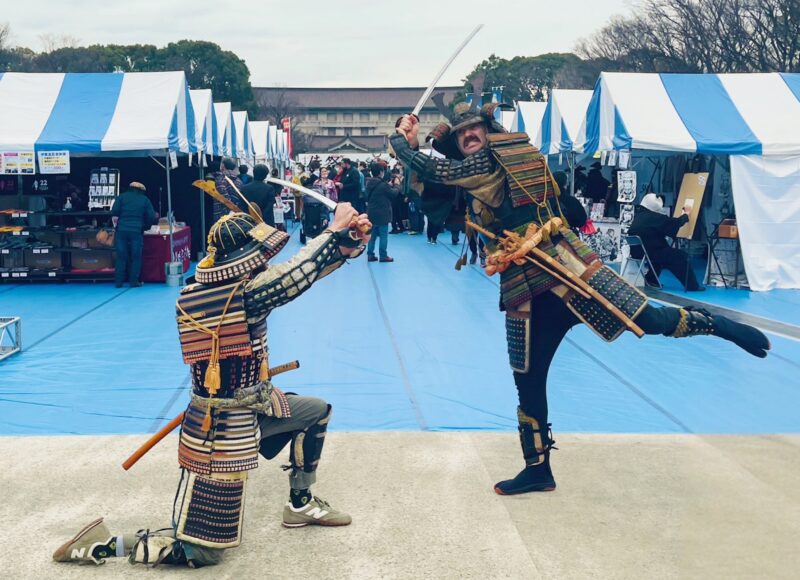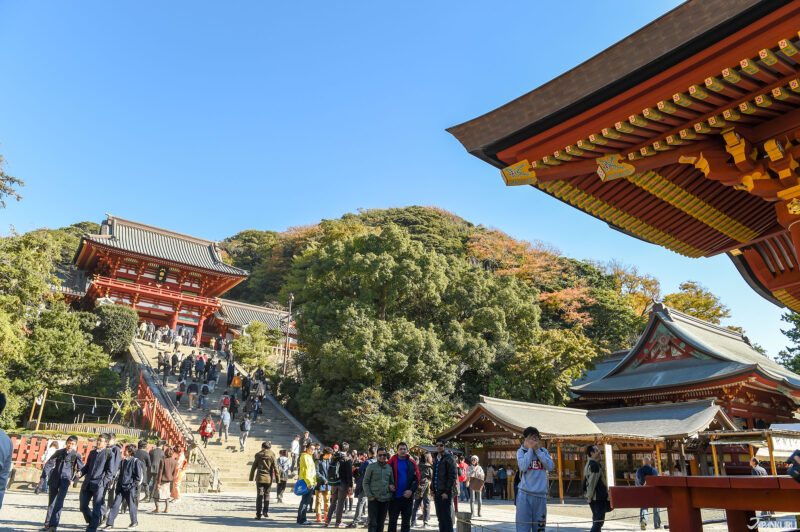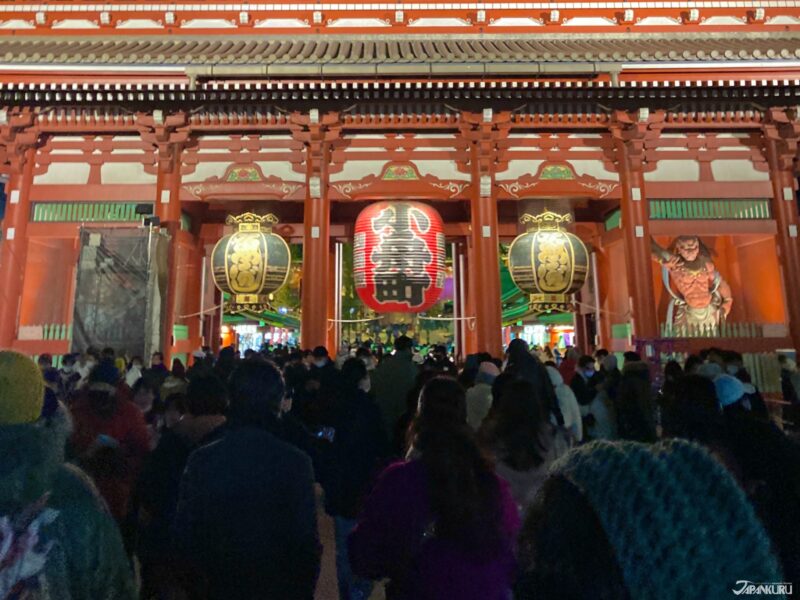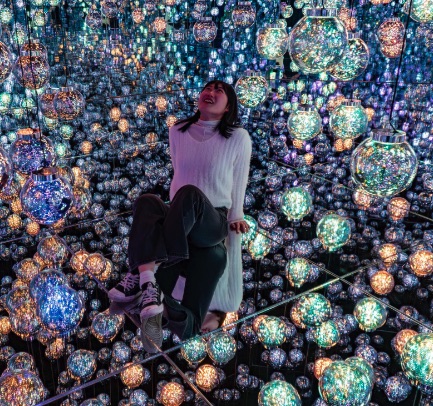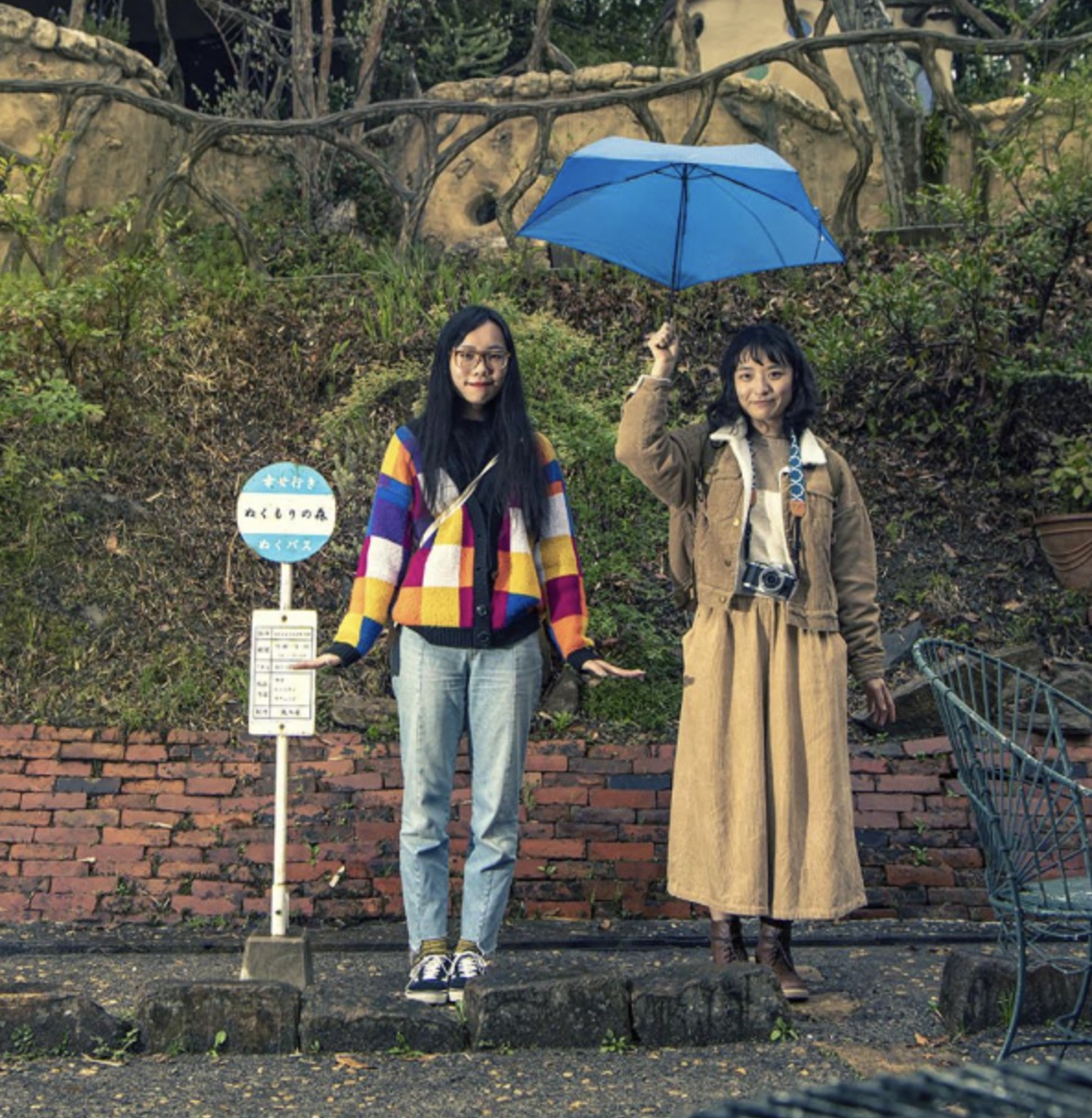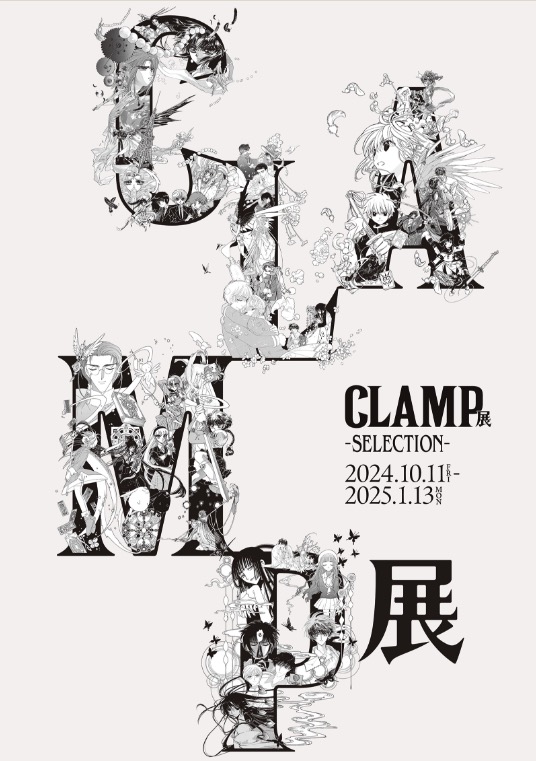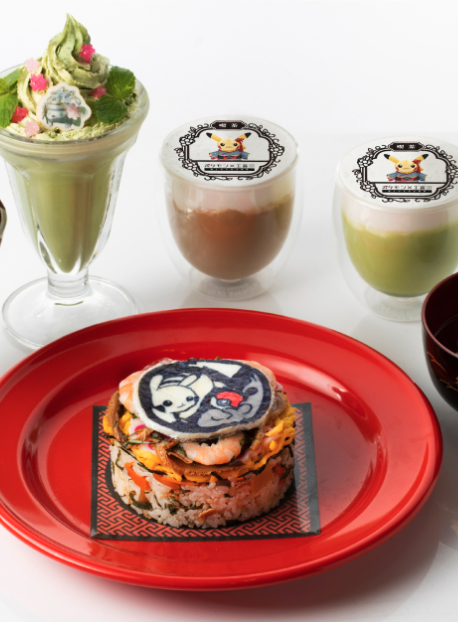
CONTENTS
Sleek and stylish, GRIDS Tokyo Ueno Hotel + Hostel is not only steps from one of Tokyo’s major train stations and shinkansen hubs, it’s also a pretty comfortable place to stay during your trip to Japan’s capital. No longer must hostels be old and worn-out – GRIDS is a growing group of swanky modern hostel/hotels, made to offer reasonable accommodations to travelers in Japan’s biggest cities, without sacrificing comfort or convenience. We went to take a look at their newest location, opened just recently in October 2019, and it’s definitely a great deal. Read on to find out why GRIDS Tokyo Ueno is our Ueno hostel recommendation for Tokyo travelers!
GRIDS Tokyo Ueno Hotel + Hostel
There are many reasons to stay in a hostel when traveling. An affordable hostel in Tokyo can certainly be a boon to your budget. Plus, the low-key relaxed atmosphere of a hostel, with ample opportunities to meet fellow travelers and make new friends, is always lots of fun. Now, imagine those positives, plus the chic interiors of a modern hotel, and options for both shared rooms and privates. GRIDS Tokyo Ueno blows away any stereotypes you might have of dingy old hostels!
If a convenient location is your priority, you're not going to find a better deal than GRIDS Tokyo Ueno. It's a 2-minute walk from the Iriya Exit of Ueno Station, a stop on more train lines than you can count. Major shinkansen bullet train lines, 5 different JR train lines, 2 different Tokyo Metro lines, and even the Keisei Skyliner (which goes to and from Narita Airport) all stop in at Ueno.
Of course, being so close to Ueno Station means that GRIDS is also right near the attractions of Ueno itself! While Ueno pulls fewer international tourists than other parts of Tokyo, it's a fun place to hang out, and next to the station you'll find Ameya Yokocho (Ameyoko for short), which has an outdoor market and lots of izakayas (Japanese restaurant/bars). Additionally, the huge Ueno Park, right on the other side of the station from GRIDS, is home to Ueno Zoo, multiple art and science museums, Shinto shrines, and nice places to picnic when the weather's nice.
The wide range of rooms caters to a variety of travelers, so social events at the hostel are a chance to meet all kinds of interesting people, and maybe find some new travel companions on the way!
GRIDS Tokyo Ueno Hotel + Hostel
7-10-4 Ueno, Taito Ku, Tokyo, Japan
Access: 2 min. from JR Ueno Station's Iriya Exit / 9 min. from Keisei Ueno Station
Check-in/Check-out: 16:00~ / ~11:00
Contact: info@grids-ueno.com / +81 3-5830-0030
Official Website (en) / Reservations
Rooms for Any Traveler
① Dormitory Rooms: Bunk Up in Style
The hostel accommodations in GRIDS are focused around their dorm-type rooms equipped with naturally stylish wooden bunk beds, generally sleeping 5 or 6 people per room. If you're still traumatized by the precarious towers of beds found in London hostels, have no fear – these beds are sturdy, comfortable, and even come equipped with a variety of built-in conveniences, like a little reading light and electrical outlets for charging all your devices (including handy USB outlets).
These sound-proofing curtains add an impressive amount of privacy when you just need your own little space!
There are lots of useful little spaces inside the bunk beds; you can hang up a towel or tomorrow's change of clothes on this little rack.
Since hostel dormitory rooms are by nature a space used by multiple people, often strangers, there's a thoughtful little safe-type cabinet on the wall inside each bunk. If you're worried about any small valuables, just lock them up for some peace of mind! (But don't forget! While traveling in Japan, foreign visitors are legally supposed to carry their passport on them at all times. Don't forget it in the safe!)
Rainy coats can also be conveniently hung on the wall away from the bunk beds.
And this being Japan, of course GRIDS provides cushy slippers for use while shuffling around the halls!
In the larger 6-person rooms, they know someone or other is likely to have a huge suitcase or two, so there's plenty of luggage storage space both under the beds and in the corner.
Of course, beds aren't the only amenities to be found at GRIDS. On the standard dorm floors there are shared toilets, shower rooms, powder rooms, and coin-operated washing machines (we always recommend you pack light and leave room for souvenirs)! Just like your standard hotel, everything's kept sparkling clean by the cleaning staff.
Always a lifesaver in hostels – the showers have little anterooms perfect for changing, so you can keep your towels and clean clothes nice and dry. They also provide toiletries like shampoo, conditioner, and body soap for free! And towels can be easily rented for a small fee.
② Female Dormitory Rooms: Stay Over with the Girls
For women traveling solo or together, the women-only 6th floor of GRIDS might be just the place!
The thorough security at GRIDS means that only guests with a room key for the women-only 6th floor can get there in the elevator.
The bedrooms on the 6th floor are essentially the same as the standard dormitory rooms.
But the 6th-floor powder room is a little special. Moisturizers and other skincare products are provided for use, which might be an interesting experience, since Japanese skincare products tend to be different from those in the West.
Guests on the 6th floor can also rent a Dyson hairdryer from the front desk. Time to see just how good these fancy appliances really are!
③ Private Rooms: A Little Privacy for the Solo Traveler, the Couple, or the Family!
When you want the convenience of being near Ueno Station and the affordable rates of a hotel/hostel, but still aren't up for sharing a room with new friends, the private rooms at GRIDS are a great option. Whether you're traveling with a special someone, a family of four, or as a group of six buddies, they've got you covered with rooms for 2, 4, and 6 people.
Above you'll see the cozy Double Room, which is really just like a simple hotel room, with a private bathroom and a TV to hang out and watch some Japanese dramas on.
The quadruple (four-person) private room is pretty ideal for families, with a safe bunk bed kids will love.
The private bathrooms for the double and quadruple private rooms are simple and clean, and include bathtubs for a nice, relaxing soak.
And the quadruple rooms have a convenient extra washbasin near the door.
The six-person private rooms are a little like the dorm rooms, but you get them all to yourself, and they've got some non-bunk beds as well. They're great for big families or groups of friends.
Of course, the six-person privates do have their own bathroom! And with a fair number of people using it, GRIDS has thoughtfully chosen a Japanese-style bathtub area, which has a door separating it from the sinks and toilet. Also, yes, sinks! There are two of them, so everyone doesn't have to line up to brush their teeth.
The private bathrooms also come equipped with amenities like scrubby towels, toothbrushes, razors, hairbrushes, and a hairdryer.
Comfortable Common Spaces
Make the most of the friendly GRIDS Tokyo Ueno hostel atmosphere! The lounge has a variety of comfortable seating where you can snack, meet other travelers, play games, and just relax – all while looking out onto the streets of Tokyo.
If you're working to entertain kids for an hour, or you're just a solo traveler looking to make friends in Tokyo, borrow a game for free!
The lounge's mini-kitchen is a convenient addition with a shared refrigerator, sink, microwave, and toaster. If you're trying to keep costs down, you can always grab food from a nearby convenience store (famously delicious in Japan!), heat it up here, and chow down in the lounge.
The Tasty Breakfast Buffet
Book the optional breakfast buffet along with your room to start every day full of energy, and ready to go! With a variety of breads, cereal and yogurt, sausages, eggs – even rice balls and hearty soups – plus of course coffee and other drinks, you'll be prepared for a full morning of seeing the sights.
The Sake Bar: Taste Regional Sake from All Over Japan
The convenient lobby bar sells a variety of drinks, but in hopes of sharing a little bit of Japanese drinking culture, their specialty is local varieties of sake (or 日本酒, "nihonshu" in Japanese) from across the nation. If you'd like to compare the different flavors, you can order a little tasting set of two or three kinds.
To go along with the drinks, you can also order a selection of snacks from the bar. Some of them are even fairly hearty, like grilled mackerel.
Regular Community Events – at GRIDS!
One of the most fun parts of staying at GRIDS is getting to participate in their regularly held events. Sometimes that involves a cultural exchange or making some kind of Japanese food while mingling with other guests, and sometimes GRIDS Tokyo Ueno even invites local experts to perform and share their knowledge of Japanese culture with guests!
They've got event schedules up in the lounge and the elevator, so you can see what events are coming up. Hopefully we can visit again sometime soon and participate in a takoyaki party – the Osaka dish is really most delicious when you make it together with friends! Before you arrive, you can also check the schedule and see pictures from recent events on the official GRIDS Tokyo Ueno instagram.
When we checked out the hostel this time, we arrived just in time to see one of their events featuring special guests. The theme? Japanese kendama!
Kendama (けん玉) are traditional Japanese toys, like a fancier version of simple, old-fashioned cup and ball toys. If you're anything like us, you've always thought "cool, but I don't have the coordination to actually get the ball into the cup." The pros at the event were there to prove us wrong, though! It turns out that with a little bit of high-quality coaching and a few minutes practice, just about anyone can do simple kendama tricks!
First, though, the event included some silly kendama games that got everyone laughing (as they tried to close their eyes, stand on one foot, and balance a kendama on their head all at once)!
(It is seriously impressive!)
As more and more guests trickled in, and everyone was getting into the kendama spirit, a whole team of kendama experts swooped in to teach everyone the skill.
What started as a random collection of guests meandering through the lobby turned into a fun communal event that anybody could join in on.
By the end of the event, everyone felt comfortable hanging out with each other, and lots of participants stuck around chatting with new friends in the lounge. With this goal in mind, GRIDS Tokyo Ueno puts on regular events in the lounge, good for groups and solo travelers alike.
Have you stayed at a GRIDS hotel + hostel before? Planning on visiting Ueno? Let us know about your experience on twitter, instagram, and facebook!
Details
NAME:GRIDS Tokyo Ueno Hotel + Hostel
MAP
ACCESS:Ueno Station
CONTACT TEL:03-5830-0030
CONTACT EMAIL:info@grids-ueno.com
COMMENT
FEATURED MEDIA
VIEW MORE
A Tokyo Winter Must-See: Tokyo Mega Illumination Event Period: November 2, 2024 ~ January 12, 2025 *Closed Nov 4~8, Dec 1~6, Dec 25~ Jan 1. End date may be subject to change. Hours: 16:30 – 21:00 (final admission 20:00) *Opening hours may vary depending on scheduled events or congestion, please check the official website for details. Directions: 2 min. walk from Tokyo Monorail Oikeibajo-Mae Station, 12 min. walk from Keikyu Tachiaigawa Station #japankuru #tokyowinter #tokyomegaillumination #megaillumination2024 #tokyocitykeiba #도쿄메가일루미네이션 #tokyotrip #oiracecourseillumination

Tokyo Shopping Spot Recommendation: New Balance Kichijoji #newbalance #newbalancekichijoji #newbalancejapan #japanesesneakerheads #shoppinginjapan #japantrip #도쿄여행 #도쿄쇼핑 #뉴발란스 #일본한정 #일본패션 #日本購物 #日本買衣服 #NB #日本時尚 #東京購物 #รองเท้าnewbalance #นิวบาลานซ์ #รองเท้าผ้าใบ #ช้อปปิ้ง #คิจิโจจิ #japankuru

See Kyoto Clearly With Your New Glasses #japankuru #kyoto #jins #교토여행 #진즈 #京都 #교토수족관 #가모가와 #kamogawa #kyotoaquarium

The First Japanese Converse Flagship: CONVERSE STORE HARAJUKU #japankkuru #conversejp_pr #conversejapan #harajuku #tokyotrip #converse #tokyoshopping #匡威 #帆布鞋 #東京購物 #原宿 #日本時尚 #일본쇼핑 #일본컨버스 #일본한정 #하라주쿠 #일본패션 #일본스트릿 #รองเท้าconverse #รองเท้าผ้าใบ #ช้อปปิ้ง #ฮาราจูกุ #คอนเวิร์ส

Japanese Makeup Shopping • A Trip to Kamakura & Enoshima With Canmake’s Cool-Toned Summer Makeup #pr #canmake #enoshima #enoden #에노시마 #캔메이크 #japanesemakeup #japanesecosmetics

⚔️The Robot Restaurant is gone, but the Samurai Restaurant is here to take its place. Check it out, and don't forget your coupon! 🍣신주쿠의 명소 로봇 레스토랑이 사무라이 레스토랑으로 부활! 절찬 쿠폰 발급중 💃18歲以上才能入場的歌舞秀,和你想的不一樣!拿好優惠券去看看~ #tokyo #shinjuku #samurairestaurant #robotrestaurant #tokyotrip #도쿄여행 #신주쿠 #사무라이레스토랑 #이색체험 #할인이벤트 #歌舞伎町 #東京景點 #武士餐廳 #日本表演 #日本文化體驗 #japankuru #japantrip #japantravel #japanlovers #japan_of_insta

Japanese appliance & electronics shopping with our KOJIMA x BicCamera coupon! 用JAPANKURU的KOJIMA x BicCamera優惠券買這些正好❤️ 코지마 x 빅 카메라 쿠폰으로 일본 가전 제품 쇼핑하기 #pr #japankuru #japanshopping #kojima #biccamera #japaneseskincare #yaman #dji #osmopocket3 #skincaredevice #日本購物 #美容儀 #相機 #雅萌 #日本家電 #일본여행 #면세 #여행꿀팁 #일본쇼핑리스트 #쿠폰 #일본쇼핑 #일본브랜드 #할인 #코지마 #빅카메라 #japankurucoupon

Odaiba's DiverCity Tokyo Plaza is home to the famous real-size 20m-tall Unicorn Gundam, and the popular shopping center has even more Gundam on the inside! Check out the Gundam Base Tokyo on the 7th floor for shelves upon shelves of Gunpla, and the Gundam Base Tokyo Annex on the 2nd floor for cool anime merchandise. Both shops have tons of limited-edition items! #pr #odaiba #tokyo #tokyotrip #japantrip #japantravel #PR #divercity #divercitytokyoplaza #tokyoshopping #gundam #unicorngundam #gundambasetokyo #anime #otaku #gunpla #japankuru #오다이바 #다이바시티도쿄 #오다이바건담 #건담 #일본건담 #건프라 #건담베이스도쿄






































